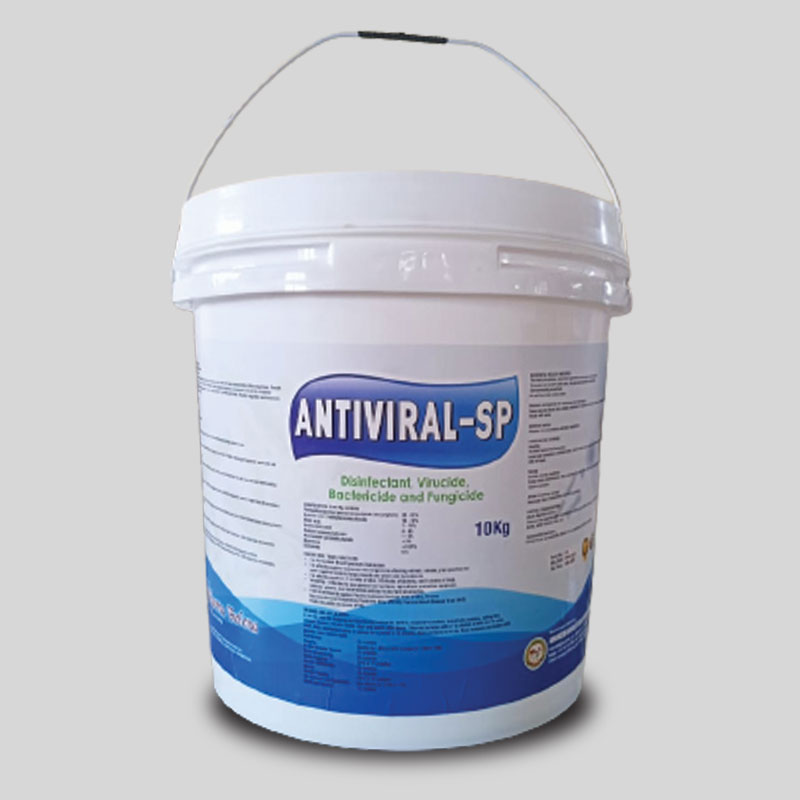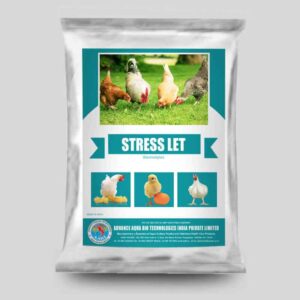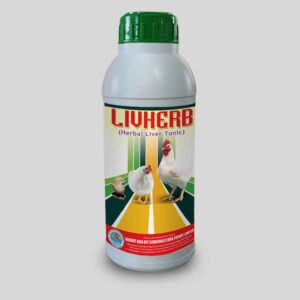COMPOSITION: Each Kg contains
Pentapotassium bis(peroxymonosulphate) bis(sulphate) 40 – 55%,
Sodium C10-13-alkylbenzenesulfonate 10 – 12%,
Malic acid 7 – 10%, Sulphamidic acid 4 – 6%, Sodium toluenesulphonate 1 – 5%,
Dipotassium peroxodisulphate <3%, Dipentene <0.25%, Excipients Q.S.
INDICATIONS / MAIN FUNCTIONS:
• It is Formulated Broad Spectrum Disinfectant.
• It is effective against numerous microorganisms affecting animals: viruses, gram positive and
gram negative bacteria, fungi (moulds and yeast) and mycoplasma.
• It is effective against: 61 strains of virus, 33 strains of bacteria, and 6 strains of fungi.
• Versatility – Effective for non-porous hard surfaces, agricultural production equipment,
vehicles, wheels, boot disinfection and day-to-day farm disinfection.
• It works efficiently against Porcine Epidemic Diarrhea Virus (PEDv), Porcine
Reproductive and Respiratory Syndrome Virus (PRRS),
Foot and Mouth Disease Virus (FMD) Peste des petits ruminants (PPR).
Foot and Mouth Disease Virus (FMD) Peste des petits ruminants (PPR).
DOSAGE AND APPLICATION:
It can be used for cleaning and disinfecting hatcheries, setters, evaporative coolers,
humidifying systems, ceiling fans, chicken houses, transfer trucks, trays and plastic chick boxes.
Saturate surfaces with a 1% solution of Anti viral SP with a cloth, mop, mechanical spray
or sponge for a period of 10 minutes. Allow surfaces to air dry.
Rinse waterers and feeders with potable water before reuse.
humidifying systems, ceiling fans, chicken houses, transfer trucks, trays and plastic chick boxes.
Saturate surfaces with a 1% solution of Anti viral SP with a cloth, mop, mechanical spray
or sponge for a period of 10 minutes. Allow surfaces to air dry.
Rinse waterers and feeders with potable water before reuse.
Hatcheries: 1% solution
Fogging: Dilution to 1.0% to 2.0% in water (1: 100 to 1:50)
Broiler/Breeder Houses: 1% solution
Swine Disinfecting: 1% solution
Swine Fogging: 0.5% to 1% solution
Equine Disinfecting: 1% solution
Bovine: 1% Solution
Bovine Fogging: 0.5% to 1% solution
For Surfaces and Equipment: Use dilution of 1:100 or 1:50
Boots and Vehicles: 1% solution
PERSONAL PROTECTION:
Personal protective equipment Respiratory protection: When workers are facing concentrations above the exposure limit they must use appropriate certified respirators. Provide adequate ventilation. In case of insufficient ventilation, wear suitable respiratory equipment. Consult the respirator manufacturer to determine the appropriate type of equipment for a given application. Observe respirator use limitations specified by the manufacturer.
Hand protection: Wear gloves.
Eye protection: Tightly fitting safety goggles.
Skin protection: Wear as appropriate: Apron, Boots, Remove and wash contaminated clothing before re-use.
Hygiene measures: Wash hands before breaks and immediately after handling the product.
Regular cleaning of equipment, work area and clothing.
FIRST AID MEASURES Never give anything by mouth to an unconscious person.
When symptoms persist or in all cases of doubt seek medical advice.
Inhalation: Remove from exposure, lie down. If victim has stopped breathing:
Artificial respiration and/or oxygen may be necessary. Consult a physician.
Skin contact: Wash off immediately with plenty of water.
Remove contaminated clothing and shoes. Wash contaminated clothing before re-use. Consult a physician.
Eye contact: Rinse immediately with plenty of water, also under the eyelids, for at least 15 minutes. Call a physician immediately.
Personal protective equipment Respiratory protection: When workers are facing concentrations above the exposure limit they must use appropriate certified respirators. Provide adequate ventilation. In case of insufficient ventilation, wear suitable respiratory equipment. Consult the respirator manufacturer to determine the appropriate type of equipment for a given application. Observe respirator use limitations specified by the manufacturer.
Hand protection: Wear gloves.
Eye protection: Tightly fitting safety goggles.
Skin protection: Wear as appropriate: Apron, Boots, Remove and wash contaminated clothing before re-use.
Hygiene measures: Wash hands before breaks and immediately after handling the product.
Regular cleaning of equipment, work area and clothing.
FIRST AID MEASURES Never give anything by mouth to an unconscious person.
When symptoms persist or in all cases of doubt seek medical advice.
Inhalation: Remove from exposure, lie down. If victim has stopped breathing:
Artificial respiration and/or oxygen may be necessary. Consult a physician.
Skin contact: Wash off immediately with plenty of water.
Remove contaminated clothing and shoes. Wash contaminated clothing before re-use. Consult a physician.
Eye contact: Rinse immediately with plenty of water, also under the eyelids, for at least 15 minutes. Call a physician immediately.
Ingestion: Do NOT induce vomiting. If a person vomits when lying on his back, place him in the recovery position.
Drink 1 or 2 glasses of water. Never give anything by mouth to an unconscious person. Call a physician immediately.
ACCIDENTAL RELEASE MEASURES
Personal precautions, protective equipment and emergency procedures: Evacuate personnel to safe areas. Use personal protective equipment. Environmental precautions: Do not flush into surface water.
Methods and materials for containment and cleaning up: Sweep up and shovel into suitable containers for disposal. Avoid dust formation. Avoid moisture. After cleaning, flush away traces with water.
Additional advice: Dispose of in accordance with local regulations.
HANDLING AND STORAGE
Handling Technical measures/Precautions: Avoid dust formation in confined areas.
Do not breathe dust or spray mist. Provide adequate ventilation. Avoid contact with skin and eyes.
Storage
Suitable storage conditions: Protect from contamination.
Keep containers dry and tightly closed to avoid moisture absorption and contamination. Store in original container.
Advice on common storage: Keep away from: Combustible material Strong bases
DISPOSAL CONSIDERATIONS Waste disposal methods:
Dispose of as special waste in compliance with local and national regulations.
The product should not be allowed to enter drains, water courses or the soil.
Contaminated packaging: If recycling is not practicable, dispose of in compliance with local regulations.
Packaging: 10 Kg
Drink 1 or 2 glasses of water. Never give anything by mouth to an unconscious person. Call a physician immediately.
ACCIDENTAL RELEASE MEASURES
Personal precautions, protective equipment and emergency procedures: Evacuate personnel to safe areas. Use personal protective equipment. Environmental precautions: Do not flush into surface water.
Methods and materials for containment and cleaning up: Sweep up and shovel into suitable containers for disposal. Avoid dust formation. Avoid moisture. After cleaning, flush away traces with water.
Additional advice: Dispose of in accordance with local regulations.
HANDLING AND STORAGE
Handling Technical measures/Precautions: Avoid dust formation in confined areas.
Do not breathe dust or spray mist. Provide adequate ventilation. Avoid contact with skin and eyes.
Storage
Suitable storage conditions: Protect from contamination.
Keep containers dry and tightly closed to avoid moisture absorption and contamination. Store in original container.
Advice on common storage: Keep away from: Combustible material Strong bases
DISPOSAL CONSIDERATIONS Waste disposal methods:
Dispose of as special waste in compliance with local and national regulations.
The product should not be allowed to enter drains, water courses or the soil.
Contaminated packaging: If recycling is not practicable, dispose of in compliance with local regulations.
Packaging: 10 Kg





Reviews
There are no reviews yet.